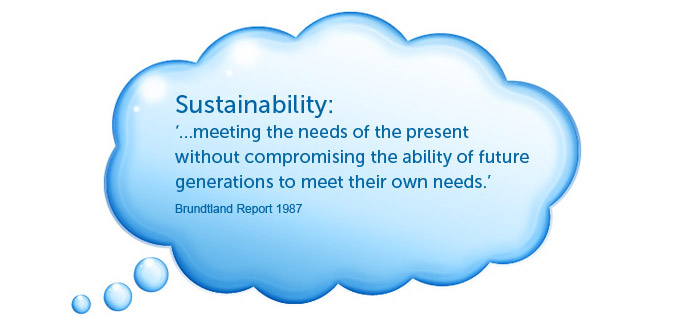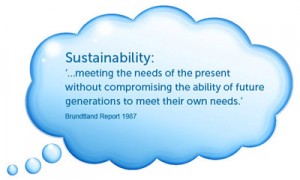Understanding Sustainability funds
Posted on: April 18th, 2019

A growing number of funds are now marketed as being ‘sustainability themed’ or having sustainability related themes (often in addition to ethical, ESG or other SRI strategies).
These funds employ many different strategies, methods and ‘lines of thought’. For most, sustainability is demonstrably central to their investment proposition (via various policies, themes and research criteria).
These funds commonly have complex, valid (and genuine) methods of evaluation that demonstrate a clear aim to understand and integrate sustainability issues into investment research and stock selection. (These may include a list of issues considered, aims and/or reference to ‘norms’ such as the UN Global Compact or the UN Sustainable Development Goals – SDGs). Yet in practice their stock selection decisions are very different.
Their ‘upsides’ are often clear as they can help encourage or support the shift towards more sustainable business practices and lifestyles, but their differences can cause issues. Common criticism include funds being confusing, not doing what they say they do, investing in too many large companies or deviating too far from recognised benchmarks (ie being too high risk).
In practice what these concerns actually indicate is that this is a healthy, diverse sector – with different funds suited to different clients.
To illustrate the various approaches I have described funds (below) as fitting into two main groups – plus a third ‘combination’ group.
The following note is to explain these broad groupings – and highlight some of the advantages and disadvantages – and therefore the suitability – of each.
Group 1. Large cap oriented (most sectors)
Where ‘Sustainability’ means;
- Investing in ‘best in sector’ companies – across all / almost all sectors
- ESG integration / risk management (favour companies that tick all relevant ESG boxes)
- Voting – likely to use voting rights to call for higher standards
- Engagement activity – use access to management and voting powers to encourage more sustainable business practices
Companies held / of note
Managers look for companies that display an understanding of sustainability issues and display leadership qualities. Funds of this kind may hold oil companies, which managers may engage with – and favour those they believe to be ‘best in sector’. They may also hold FAANG companies and other large caps (that may not suit all clients) . These funds may also invest extensively in financials (particularly large banks) which managers may see as ‘broadly neutral’. Others would dispute this view as banking activities (and the wider ‘direction’ of capital) is far from neutral (see eg TCFD/PRA/PRI work in this area).
Funds such as these are well placed to influence larger companies that need to be encouraged to be ‘part of the solution’ (as they may have large carbon footprints, research budgets etc) . However because of their size such holdings will be criticised (and likely to attract negative media attention) as a result of their inherent ‘ambiguities’ – particularly if what they ‘do’ as a business is inherently unsustainable.
Upside
- This strategy offers significant ‘engagement’ (‘investor stewardship’) opportunities and can help effect essential progress in very large companies
- Can exert pressure on some of the world’s largest companies through engagement and voting (and encourage laggards to follow)
- Provides protection against ESG risks (the level of protection with largely depend on external factors such as regulation, competition etc)
Downside
- May upset clients because of large caps exposure and limited investment in pure play / solutions companies
- Risks undermining trust in the sustainability fund sector if fund strategy is misunderstood
- May give false hope to advisers/clients (if they expect sustainability themed funds to invest extensively in pure play solutions companies)
- May hold companies that fail to recognise systemic shifts
Benchmarks
Funds of this kind will typically ‘hug’ commonly used ‘mainstream’ benchmarks
Group 2. Small/Mid cap oriented (solutions companies)
Where ’Sustainability’ means:
- Positive investment decisions that directly support the transition towards more sustainable economies through investment in solutions companies / pure play companies
- Extensive avoidance / exclusions – either explicit or implicit (‘because companies like that would never meet our selection criteria…’)
- ESG integration – ESG risks will be understood but if a company has suboptimal governance processes – for example – this may not exclude them as this is a common feature of smaller/younger companies.
Companies held / of note
Change agents, sector leaders, pure play – companies involved in eg alternatives to single use plastics, recycling/waste management, parts for clean energy/ EVs, resource (eg water) management etc – often small and/or mid cap companies.
Funds typically hold sector leaders that are ‘doing new and interesting things’ . A company may be relatively high profile if a particular issue is under the spotlight, but if not – it is likely to be unknown.
These funds will not hold eg FAANGS , oil or fracking companies – and are unlikely to hold many banks.
Likely to make reference to ‘impact’, ‘solutions companies’, ‘making a difference’, ‘purpose’.
Upside
Direct capital towards solutions companies that are leading change (and that often need financial support / investment in order to grow).
Invest in the kinds of companies clients want to support/ see succeed.
Downside
Linked to small/mid cap bias – likely to hold fast growing companies but may provide a ‘bumpy ride’ particularly as long as markets fail to factor in the urgency around climate change.
May be out-gunned by larger companies moving in to their markets or other innovators/inventions.
Funds of this kind are unlikely to carry out extensive engagement as they generally do not hold contentious companies.
Benchmarks
Funds of this kind will (and must) deviate from the most commonly used benchmarks on the grounds that ‘things need to change’.
Group 3 – Combination of 1 & 2
Where ’Sustainability’ means:
- Positive, often theme led stock selection strategy
- ESG issues integrated and interpreted to fit fund strategy
- Avoids / does not invest in some sectors (won’t invest in areas that are clearly at odds with funds stated strategy and showing no willingness to transition towards more sustainable )
- Engagement / stewardship strategies to help effect change where required
- Aims to help deliver positive impacts and outcomes through investment in a wide range of companies
These funds / fund management companies typically employ experts/specialists who may have scientific or sustainability backgrounds.
These managers understand systemic shifts, are ahead of regulatory change and are able to communicate strategy and performance well. Stock selection may include a degree of pragmatism, perhaps to protect the fund when smaller companies are out of favour.
Issues:
Funds of this kind often have wide appeal, but may include some contentious larger companies as well as some potentially higher risk pure play companies. With regard to their more ‘boarder line’ companies – managers with strong voting/engagement expertise will use this as an opportunity to encourage better practices but are liable to sell if a company is unresponsive.
Notes:
- See FundEcoMarket.co.uk ‘Policies, Issues and Themes’, ‘Approaches, Applications and Features’ and ‘Corporate Activity’ filters to find funds with the above characteristics.
- The issue of ‘greenwashing’ has been parked for the purpose of this note – but in brief my view is that this is a real and substantial challenge – but not as common as some fear.)
- Julia Dreblow 17/4/2019
